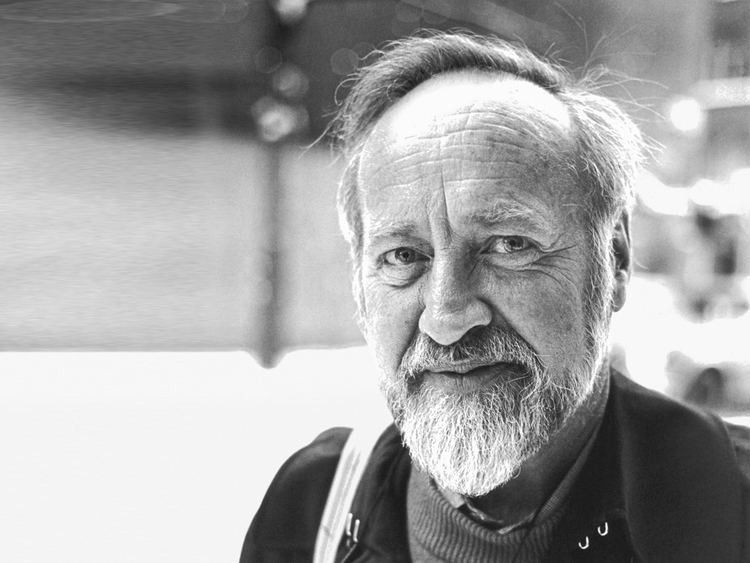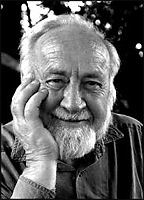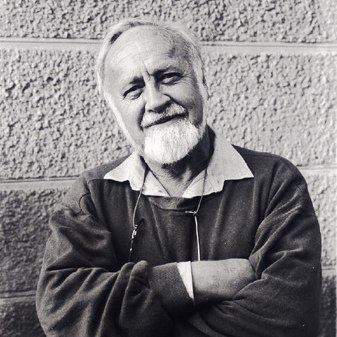Residence Australia Role Author Name Bill Mollison | Nationality Australian | |
 | ||
Institutions CSIROTasmania MuseumInland Fisheries CommissionPermaculture Institute Known for Environmental psychologyPermaculture Books Permaculture: A Designer, An introduction to permac, The Permaculture Book of F, Travels in Dreams, Permaculture One: A Perennial Similar People | ||
Bill mollison permaculture design
Bruce Charles "Bill" Mollison (4 May 1928 – 24 September 2016) was an Australian researcher, author, scientist, teacher and biologist. He is referred to as the "father of permaculture." Permaculture (a portmanteau of "permanent agriculture") is an integrated system of ecological and environmental design which Mollison co-developed with David Holmgren, and which they together envisioned as a perennial and sustainable form of agriculture. In 1974, Mollison began his collaboration with Holmgren, and in 1978 they published their book Permaculture One, which introduced this design system to the general public. Mollison founded The Permaculture Institute in Tasmania, and created the education system to train others under the umbrella of permaculture. This education system of "train the trainer", utilized through a formal Permaculture Design Course and Certification (PDC), has taught thousands of people throughout the world how to grow food and be sustainable using permaculture design principles.
Contents
- Bill mollison permaculture design
- Bill Mollison Permaculture Design
- Biography
- Career
- Development of permaculture
- References

Bill Mollison Permaculture Design
Biography

Bruce Charles "Bill" Mollison was born in 1928, in the Bass Strait fishing village of Stanley located on the north-west part of Tasmania, Australia. Mollison moved from Tasmania to Tyalgum in the Tweed Valley of northern New South Wales in 1987 where he lived for the next decade before returning to Tasmania. He spent his final years in Sisters Beach in north-west Tasmania. He died in Hobart, Tasmania, in 2016, aged 88. He is survived by his fifth wife Lisa, four daughters, and two sons.
Career

Mollison left school at age 15 to help run the family bakery. In the following ten years he worked as a shark fisherman, seaman, forester, mill worker, trapper, snarer, tractor-driver and naturalist.
In 1954, at the age of 26, Mollison joined and worked for the 'Wildlife Survey Section' of the Commonwealth Scientific and Industrial Research Organisation (CSIRO). In the 1960s, Mollison went on to work at the Tasmanian Museum where he was a curator. He also worked with the Inland Fisheries Commission, where he was able to resume his field work once again. In 1966, he entered the University of Tasmania. After he received his degree in bio-geography, he stayed on to lecture and teach, and developed the unit of Environmental Psychology. He retired from teaching in 1979 and devoted the final 30 years of his life to travelling around Australia teaching, lecturing and writing, training others in permaculture design principles.
Development of permaculture
Mollison's work with the CSIRO laid the foundation for his life-long passion: Permaculture. Mollison told his student Toby Hemenway that the original idea for permaculture came to him in 1959 while he was observing marsupials browsing in the Tasmanian rain forests, because he was "inspired and awed by the life-giving abundance and rich interconnectedness of this eco-system." At that moment, Mollison jotted down the following words in his diary: "I believe that we could build systems that would function as well as this one does." By the late 1960s, he started developing ideas about stable agricultural systems on the southern Australian island state of Tasmania. This resulted from his own personal observations of the growth and use of the industrial-agricultural methods that he believed had rapidly degraded the soil of his native state. In his view, these same methods posed a danger because they were highly dependent on non-renewable resources, and were additionally poisoning land and water, reducing biodiversity, and removing billions of tons of topsoil from previously fertile landscapes. Writes Mollison:
After many years as a scientist with the CSIRO Wildlife Survey Section and with the Tasmanian Inland Fisheries Department, I began to protest against the political and industrial systems I saw were killing us and the world around us. But I soon decided that it was no good persisting with opposition that in the end achieved nothing. I withdrew from society for two years; I did not want to oppose anything ever again and waste time. I wanted to come back only with something very positive, something that would allow us all to exist without the wholesale collapse of biological systems.
In 1974, he and his University of Tasmania student David Holmgren "jointly evolved a framework for a sustainable agricultural system based on a multi-crop of perennial trees, shrubs, herbs (vegetables and weeds), fungi, and root systems" for which they coined the word "permaculture".
Soon after permaculture was first introduced and then put into practice by the public, Mollison recognized that permaculture principles encompassed a movement that included not only agriculture, horticulture, architecture, and ecology, but also economic systems, land access strategies, and legal systems for businesses and communities:
As I saw permaculture in the 1970s, it was a beneficial assembly of plants and animals in relation to human settlements, mostly aimed towards household and community self-reliance, and perhaps as a "commercial endeavor" only arising from a surplus from that system. However, permaculture has come to mean more than just food-sufficiency in the household. Self-reliance in food is meaningless unless people have access to land, information, and financial resources. So in recent years it has come to encompass appropriate legal and financial strategies, including strategies for land access, business structures, and regional self-financing. This way it is a whole human system.
He helped found the first Permaculture Institute, established in 1979 to "teach the practical design of sustainable soil, water, plant, and legal and economic systems to students worldwide." In 1981, the first graduates of the permaculture design course (PDC) that he had helped to initiate, started to design permaculture systems in their respective communities. In this way, the philosophy of permaculture had begun to move beyond its original context in "land management" to cover most, if not all, aspects of human life.
In 1987, Mollison taught the first PDC course that was offered in India. By 2011 there had been over 300,000 such graduates practicing and teaching throughout the world.
